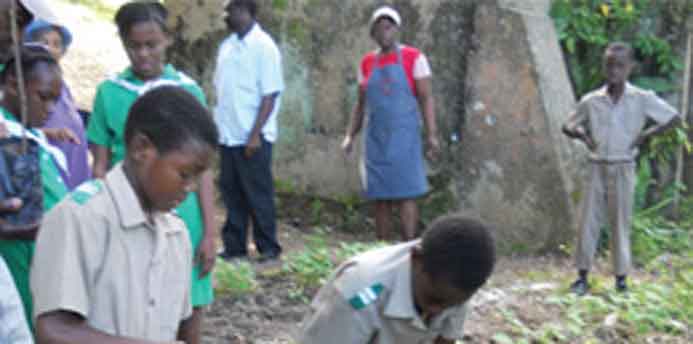Mary McLaughlin could be considered a local treasure simply for the beautiful handpainted ceramic treasures that her company, McLaughlin Glazeware, produces in Northfield.
But while high-profile customers such as Hillary Clinton are avid collectors of the enamels, chinaware, jewelry and gift boxes, McLaughlin’s other passion is found hanging on a tree.
And that passion is breadfruit. Large, soccer-ball-sized breadfruit.
Because the breadfruit tree is the center of McLaughlin’s ingenious plan to feed the world, while helping the environment.
“I’ve always been concerned about global warming. I’ve always been concerned about world hunger. I thought, if I could find a solution that could help solve the problem of carbon dioxide in the atmosphere and help feed people, I could take a step in helping both problems,” she explains.
Thus was born Trees that Feed, a nonprofit foundation that provides breadfruit trees free of charge to small farmers in McLaughlin’s native Jamaica.
“Breadfruit trees were brought to Jamaica from Tahiti in the 1700s,” she says. “They are the size of an apple tree and bear something that looks like a soccer ball, and when you roast it, tastes like a bagel.”
McLaughlin realized that if you could grow bread on a tree, it would fill people’s stomachs and solve the carbon dioxide problem in the atmosphere.
“In most poorer countries, they eat a lot of bread, but the wheat must be imported from richer countries, and it takes a lot of petroleum to transport that wheat,” she says. McLaughlin would love to take her plan global. For now, she’s started in Jamaica, as breadfruit grows easily anywhere on the island.
After a lengthy process that involved travel to a botanic garden in Kauai, then Orlando and Costa Rica, McLaughlin had established a system for tissue culturing breadfruit plants. Then, she met with the Jamaica Minister of Agriculture, who agreed that if her foundation provided the trees, the government would get them planted in nurseries and after six months would deliver them to poor farmers.
“Life expectancy for the trees is 70 years, and they bear 200 breadfruit each year,” she says.
Farmers are using the breadfruit for their own food, but McLaughlin has an idea that if Jamaica could produce enough breadfruit, they could find a way to bake breadfruit flour into organic, gluten-free, lactose-free energy bars, for export.
“I’ve been experimenting with recipes in my kitchen in Winnetka,” she says. “I put the cooked breadfruit in my food processor and make something like graham cracker crust, then add dried fruit and oats, and cook it on a baking sheet and slice it. It’s pretty good.”
A donation of $15 buys a breadfruit tree. To donate, visit treesthatfeed.org.

